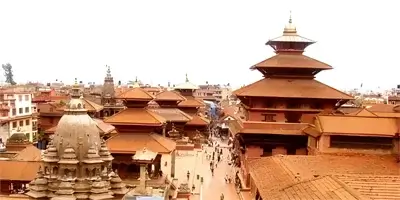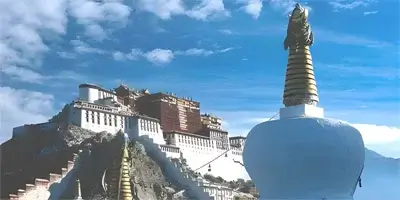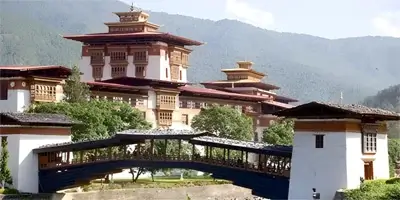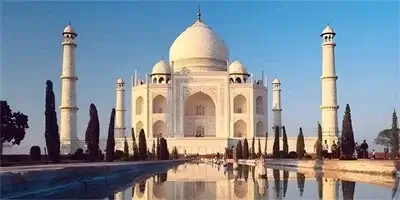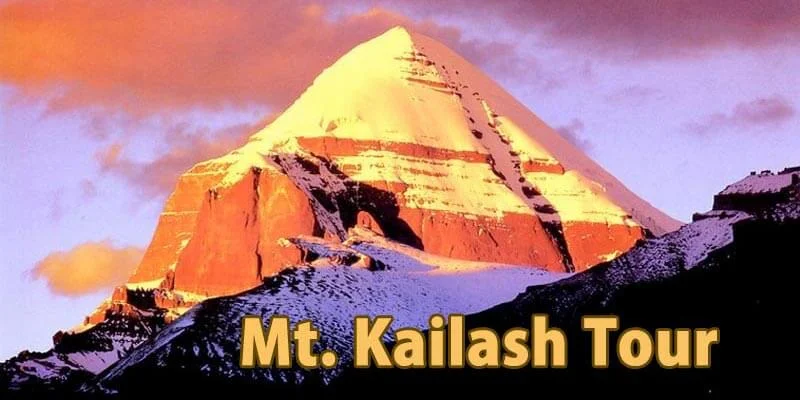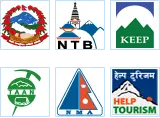Chamdo and Lhasa Tour - 14 Days
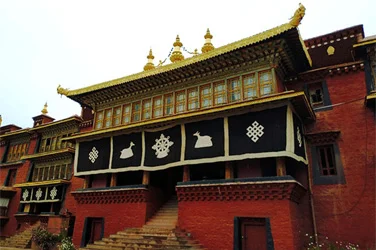
Chamdo is a land apart from the rest of Tibet. Its climate, geography, flora, fauna and isolation all lend it a unique, almost magical atmosphere. Traditional life seems less distarted here than in central Tibet. The stone villages and vertical prayer flags resemble those in Bhutan and the unusually shaped Chortens (Stupas) seem more at home in Mustang. The scenery often resembles more the Swiss Alps or Rocky Mountains than the high Tibetan plateau. Geographically the region offers great variety from subtropical low lying jungle to the glaciated peaks of Namche Barwa and the high grasslands of north eastern Tibet.
At its eastern end the headwaters of some of Asia's greatest rivers-the Mekong, Salween and Yangzi-tumble off the Tibetan plateau, carving a dramatic concertina landscape of deep gorges, microclimates and remote valleys. The main attraction of the Kham area lies in the spectacular scenery, a few remarkable monasteries and the alternative route in or out of Tibet.
There are two main routes through the region. The northern and southern roads, plunges into subtropical south-eastern Tibet and then rises up over the gorges of Kham, making this one of the most unpredicable roads in Tibet. The northern road is a higher roller coaster ride from the deep valleys near the Sichuan border to alpine pasturelands, all the time rising to the northeastern plateau of Amdo.A more comprehensive 15 days trip to Chamdo and back could take in Draksom tso, the Serkhym la, Lamaling Temple, Bayi, Pomi, Rawok, Pomda, chamdo, Riwoche, Tengchen, Sok Tsanden, Nagchu, Nam tso and Lhasa.
Itinerary
Day 01 Lhasa to Bagsum –Tso O/N Hotel (3540 m).
This beautiful alpine lake, also known as Bagsum-tso and Basong –tso, is a long day’s drive from Lhasa and a worthly 41km detour off the Sichuan-Tibet Hwy. Apart from the sheer beauty of the lake and its surrounding 6000m – plus peaks, the site has strong xonnections ot Gesar of Ling, the semimythical ruler of eastern Tibet, and Guru Rinpoche, the Indian sage, both of whom are said to have resided at the lake. Many pilgrimage sites are connected to the two.
Day 02 Bagsum – Tso to Bayi O/N Hotel (2990 m)
Bayi is a large Han Chinese military town of minor interest, except perhaps as a base from which to visit the surrounding sights or restock your supplies. ‘Bayi’ in Chinese means ‘1 August’, the founding date of the PLA. It is 125 km from Bagsum-Tso.
Day 03 Bayi to Pomi O/N GH (3000 m)
Formerly known as Tramo, this small country capital has well-stocked shops and several hotels and restaurants, making it a logical place to spend the night. In clear weather the surrounding scenery is strpendous.
Day 04 Pomi to pasho O/N
Pasho (Chinese: Bashe), fromerly known as pema (Baima), is a pleasant town that makes for a good overnight stop. Explore around Pasho visit Neru Monastery & Dola Monastery.
Day 05 Pesho to Chamdo (3600m)
Chamdo (literally ‘river confluence’; chinese: Changdu), located at the strategic river junction of the Aza-chu and the Ngon-chu, is a surprisingly pleasant town. It is dominated by the hilltop Jampaling Monastery, below which huddle the Tibetan old town and the Chinese new town. Over 1000km from Lhasa and 1250km from Chengdu, the town is the major transport, administrative and trade centre of the Kham region. Chamdo has had a troubled relationship with nearby China. The Chinese warlord Ahao Erfeng captured Chamdo in 1909 and ruled the region until the Tibetans recaptured in 1917. Chamdo fell to Communist troops in 1905.
Day 06: Chamdo to Tengchen (4200m)
Tengchen (Chinese: Dingqing) is an unremarkable but reasonably pleasant two-street town. It’s possible to make calls at the town’s telecom office. BothTengchen and the surrounding rigion of Khyungpo are strong centres of the Bon religion. The main reason to stop here is to visit Tengchen Monastery, on a hillside 4km west of town. This interesting Bon monastery is actually made up of two separate institutions.
Day 07: Tengchen to Sok DZONG
Sok’s claim to fame is the impressive sok Tsaden Monastery, set on an outcrop in the northwestern suburbs. The monastery, founded by the Mongol leader Gushri Khan, brings to mind a miniature potala. The road from Tingdhen swings north and starts to climb up to the stunning shel-la (4830m), the highest and most dramatic pass along the northern route. The road continues past the village of Gubengda, Gyaruptang and Wengdaka and then climbs yet again to the 4500m Chak-la, where turn a corner for a dramatic view of one of the Salween’s many tributaries.
Day 08 Sok DZong to Nagchu (4500m)
Nagchu (Chinese: Naqu) is one of the highest, coldest and most windswept towns in Tibet. Perched on the edge of the Changtang (northern plateau), it is a dismal town of mud and concrete, but is still an important pit stop on the road between Qinghai and Tibet. It’s a literally breathtaking place: Oxygen levels here are only 60% of those at sea level, so be prepared for headaches and watch for the symptoms of altitude sickness. Bring extra clothes, even in summer. Nagchu has a horseracing festival from 10 to 16 August, when the town swells with up to 10,000 nomads and their tents from all over the Changtang. Accommodation can be very tight at this time.
Day 09: Nagchu to Namtso Lake (4718m)
The road south of Nagchu is the Qinghai Tibet highway the busiest and most strategic highway in Tibet.The road cross the Goluk Bridge, 109km from Nagchu, and climbs to the Chokse-la, where Tibetans throw into the air the paper prayers they bought at Nagchu bus station. 128 km from Nagchu and 40 km from Damxung is the Chorten Rango, a line of eight chortens that commemorate the eight main events in the life of Sakyamuni (Sakya Thukpa). Damxung is the turn-off Nam-tso. Approximately 190km northwest of Lhasa is the second largest saltwater lake in China, the first being Koko Nor (Qinghai Lake) in Qinghai province. It is over 70km long and reaches a width of 30km.The Nyenchen Tanglha (Tangula) range, with peaks of more than 7000m, twoers over the lake to the south. Nam-tso is a tidal lake and t he ring marks of earlier lake levels are clearly visible by the shoreline.
Day 10: Namtso Lake to Phondo and Via Reting Monastery (4100m)
The monastery dates back to 1056. It was initially associated with Atisha (Jowe-je) but in its later years had an important connection with the Gelugpa order and the Dalai Lamas. Two regents – the de facto rulers of Tibet for the interregnum between the death of a Dalai Lama and the majority of his next reincarnation – where chose from Reting abbots. The fifth Reting Ringoche was regent from 1933 to 1947. He played a key role in the search for the current Dalai Lama and served as his senior toutor. He was later accused of collusion with the Chinese and died in a Tibetan prison. It was devastated by Red Guards and its present remains hammer home the tragic waste caused by the ideological zeal of the Cultural Revolution. Still, the site is one of the most beautiful in the region. The Dalai Lama has stated that should he ever return to Tibet it is at Reting, not Lhasa, that he wold like to reside. Reting is 28 km from Phongdo village, which has a ruined dzong.
Day 11: Reting Monastery to Lhasa
Day 12/13: Sightseeing around Lhasa
These days you will be engrossed with sightseeing and excursion of the Potala Palace (A great museum with its proportions and priceless treasures) Jokhang Temple (the holiest of Tibetan shrines, houses two images of the Buddha brought as dowry by Songtsen Gampo's Nepali and Chinese queens) along the bustling street of Barkhor Market. In Lhasa you will also visit Norbu Lingka (the summer palace of the Dalai Lamas), Drepung and Sera Monasteries. Overnight at Lhasa.
Day 14: Departures to Airport for your onward Destination either Nepal or China. Service End

